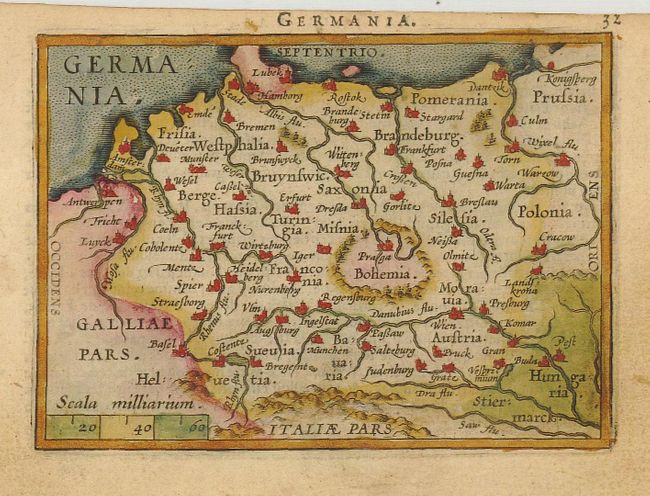
This information network worked in both directions with Ortelius passing on information he had received from one member of the network to others he thought might be interested. Also supplying the geographical and historical information with which he annotated later editions of his magnum opus.
#Ortelius abraham epitome of the theater of the world update
Through correspondence they supplied him with the information he needed to update and modernise his maps. Ortelius had connections all over Europe and even further afield amongst the scholars of his day.

The evolution of the Theatrum between its birth in 1570 and Ortelius’ death in 1589 is a wonderful example of the so-called Republic of Letters in operation in the Early Modern Period. Like the original this too went through many editions in several different languages, the first edition having been in Dutch. Of interest is a pocket sized version, or epitome, of the Theatrum that was published by Philips Galle and printed by Plantin beginning in 1577. Plantin had been involved in marketing and selling the Theatrum from the very beginning and took over printing it in 1579 uptil his own death in 1589. Starting with 53 maps in 1570, it grew to 70 maps in 1573, 93 maps in 1579, 122 maps in 1584 and in the final edition prepared by Ortelius and published in 1590, one year after his death, 134 maps. Each new edition would be modified and updated with as much new information as Ortelius could obtain. One of the most important features of the Theatrum was its evolution.

Map of the Persian Empire from the Theatrum Orbis Terrarum However, whereas it is safe to say that Gemma Frisius and Mercator were cartographers first and businessmen second in the case of Ortelius it was the other way round he was very much a businessman first and a cartographer second. Gemma Frisius, Mercator and Ortelius were all cartographers and businessmen. Ortelius’ entry into the map business was a success. This was followed by a two-sheet map of Egypt (1565), a single-sheet map of the Holy Land in 1566, a two-sheet map of Asia (1567) and a six-sheet map of Spain (1570). His first effort was an eight-sheet world map produced in 1564. It was during this trip that Mercator is supposed to have persuaded his friend to not just engrave and colour other people’s maps but to become a cartographer in his own right.įollowing the example of his mentor, Ortelius started out producing single maps sold as prints. In 1559-1560 he accompanied Mercator on his cartographical expedition through Trier, Lorraine and Poitiers. He met and became friends with Gerard Mercator at the Frankfurt book Fair in 1554. Through his various activities as a trader Ortelius came to travel extensively throughout Europe, visiting all the regions of Germany, Italy, France, England and Ireland. He set a shop trading in books, prints and maps with his sister and became an engraver for the highly influential Plantin publishing house. Ortelius studied mathematics, Latin and Greek as a youth and apprenticed as an engraver of maps and entered the Antwerp guild of map illuminators in 1547.

The son of a merchant who died whilst he was still young, in about 1535. He was born Abraham Ortel (as we most Renaissance scholars there are numerous variant spellings of the family name) in Antwerp on 14 April 1527, to where his grandfather William had moved the family from Augsburg in Southern Germany in 1460, supposedly because of religious persecution.


 0 kommentar(er)
0 kommentar(er)
